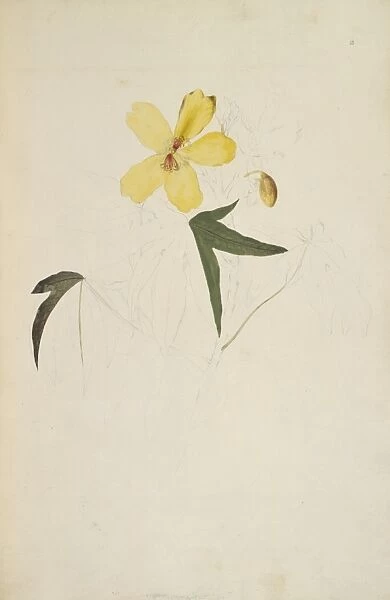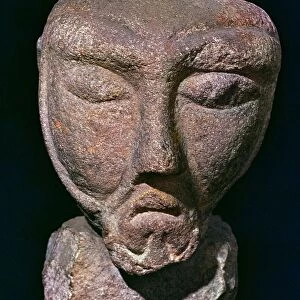Cochlospermum gillivraei, kapok tree
![]()

Wall Art and Photo Gifts from Mary Evans Picture Library
Cochlospermum gillivraei, kapok tree
Outline drawing by Sydney Parkinson made during Captain James Cooks first voyage, 1768-1771. Held in the Botany Library at the Natural History Museum, London
Mary Evans Picture Library makes available wonderful images created for people to enjoy over the centuries
Media ID 8618309
© Mary Evans Picture Library 2015 - https://copyrighthub.org/s0/hub1/creation/maryevans/MaryEvansPictureID/10707479
18th Century Captain Cook Captain James Cook Cook Eudicot Eurosid Malvaceae Malvales Malvidae Rosid Sydney Parkinson Angiospermae Ceiba Ceiba Pentandra Dicot Dicotyledon Kapok Kapok Tree Magnoliophyta
EDITORS COMMENTS
1. Title: "A Voyage Through Time: Sydney Parkinson's Illustration of Cochlospermum gillivraei, the Kapok Tree, from Captain James Cook's First Voyage (1768-1771)" 2.. This exquisite outline drawing of Cochlospermum gillivraei, commonly known as the kapok tree, is an 18th-century botanical illustration created by Sydney Parkinson during Captain James Cook's first voyage (1768-1771). The drawing is held in the esteemed Botany Library at the Natural History Museum in London. The kapok tree is a significant member of the Malvaceae family, which is part of the larger group of Angiosperms, Dicotyledons, or Eudicots. This flowering plant, also known as Ceiba gillivraei, is native to Central and South America and is characterized by its large, yellow, bell-shaped flowers. Captain Cook's voyage marked a critical period in the exploration and documentation of the natural world. Parkinson's illustrations, including this one, were instrumental in expanding European knowledge of the diverse flora and fauna of various regions. The kapok tree holds cultural and economic significance in many parts of the world. The tree's fibers are used to produce kapok, a soft, light, and buoyant material that has been used as insulation, stuffing, and even as a substitute for cotton in textiles. This illustration showcases the beauty and intricacy of the kapok tree's flowers, which are arranged in a distinctive, umbel-like structure. The tree's flowers are also an essential food source for various pollinators, contributing to the tree's role in maintaining biodiversity. As a testament to the rich history of botanical exploration and documentation, this drawing by Sydney Parkinson continues to captivate and inspire scientists, artists, and nature enthusiasts alike. The kapok tree, with its striking appearance and ecological importance, remains an enduring symbol of the natural world's wonders.
MADE IN THE USA
Safe Shipping with 30 Day Money Back Guarantee
FREE PERSONALISATION*
We are proud to offer a range of customisation features including Personalised Captions, Color Filters and Picture Zoom Tools
SECURE PAYMENTS
We happily accept a wide range of payment options so you can pay for the things you need in the way that is most convenient for you
* Options may vary by product and licensing agreement. Zoomed Pictures can be adjusted in the Cart.







